Traditional veterinary medicine
Dr. P. Ram Manohar
The history of biological sciences in ancient India is ill understood. Not to speak of its relevance and scope in contemporary times. The word Ayurveda can be aptly translated as Life Science and its scope is more than the health care of human beings. It extends to other forms of life including plant and animal life. Indeed, the ancient disciplines of Vṛkṣāyurveda and Mṛgāyurveda dealt with plant and animal life.
The branch of veterinary medicine was well developed in ancient India and was devoted to the well-being of domesticated animals like cows, horses and elephants. Earliest references can be seen in Vedic literature. Animal husbandry was prevalent in ancient India and cows, horses and elephants were the most common domesticated animals. For this reason, we find text books on Animal Husbandry and Veterinary Medicine exclusively devoted to cows, horses and elephants.
The first ever text book on Zoology seems to be Hamsadeva’s Mṛgapakṣi Śāstra – The Science of Animals and Birds. Most of the available texts on animals deal with veterinary medicine and are utilitarian in nature. In medical textbooks, animals are described as sources of meat. However, the Mṛgapakṣiśāstra was composed out of compassion for animals. In the first few verses of this text, the change of mind that happened to King Shaudadeva is described. When the King approached the forest with great zeal for hunting, he was suddenly overwhelmed by the diversity and beauty of the animal kingdom that he beheld. He exclaimed, “What a wonderful creation of God!… How cruel of me to desire to kill these living beings?” It was as desired by the King on his return to the palace, that Hamsadeva composed this text describing the different species that populate the animal kingdom on earth.
Hamsadeva uses a structured format to describe a particular species of animal or bird. He covers the entire life cycle starting with mating behavior and then goes on to describe pregnancy, delivery, behaviour of offspring, variations within the species, the life span and death. He describes the behavior of female species separately as well as the psychological inclinations of the animals and birds. This is a unique text that attempts to determine species and characteristics of various animals and birds in India. Hamsadeva recognizes different types of animals within a species. For example, he identifies six subtypes of lions — the killer, the majestic, wide-jawed, red-eyed and yellow.
The diversity of animal life has been well captured in the ancient literature of India. The canons of Caraka and Suśruta classify animals on the basis of their habitat and predatory behaviour. Animals are classified on the basis of habitat into terrestrial, underground, aquatic, aerial and marshy types. Animals are prey snatchers (prasaha), peckers (viṣkira) or attackers (pratuda). In different texts, animals have been classified on the basis of varied criteria. Animals are reproduced sexually (yonija) or asexually (ayonija). Sexual reproduction is either through eggs (oviparous) or placenta (viviparous). The texts also speak of life emerging from moisture and heat as well as from dead vegetation. One classification distinguishes animals by number of feet and another by the presence or absence of hoofs. The Matsyapurāṇa classifies animals on the basis of their activity into diurnal, nocturnal or both. A number of animals have been described in the context of food and dietetics. The medicinal and nutritional properties of meat from a variety of animal sources have been documented in the classical texts of Ayurveda. The food web and food chain have been described highlighting the principle that one form of life is food for another (jīvo jīvasya jīvanam). The snatchers are animals that snatch and eat their prey (1). Burrowing animals are those that live in pits under the ground. Wetland animals are those that live in marshy places. The aquatic animals live in water and the floating animals float on water. Terrestrial animals are those that live on land. The peckers are those that peck on the ground to pick their food. The piercers are animals that pierce and tear their prey before eating (2). These are the eight type of animals from which edible meat is obtained (3). Caraka Saṃhitā, Sūtrasthāna, 27.53-56
Hayāyurveda of Śālihotra is an ancient textbook of veterinary medicine that classifies horses and describes treatments for horses apart from providing accounts of anatomy. Śālihotra composed many treatises on horses, which were translated into Arabic, Persian and Tibetan. A treatise on Gajāyurveda devoted to elephants was composed by Pālakāpya, which deals with treatment of diseases afflicting elephants.
Gajāyurveda is still practised by traditional experts in states like Kerala. Veterinary herbal medicines are manufactured and marketed by pharmaceutical firms in India.
People of ancient India lived in close proximity with nature and were keen observers of animal life. It has been mentioned in some texts that the first clues regarding medicinal properties of plants can be discovered from animal behaviour. Thus, ancient Indian literature has one of the earliest documented evidence of the practice of zoo-pharmacognosy, that is, the discovery of medicinal uses of plants by observing how animals eat specific plants when they suffer from a disease, have worms or have been bitten by a snake.
We can thus see that Zoology, Animal Husbandry and Veterinary Science were developed in ancient India. In modern times, Veterinary medicines are being developed from Ayurveda and there are still live traditions of Ayurvedic veterinary science like Gajayurveda.
This paper will discuss the historical evolution of animal sciences in ancient India and explore the potential applications and scope of this ancient knowledge in contemporary times.

Rosenberg Ayurveda und Wellness-Consulting AG
Europäische Akademie für Ayurveda Schweiz
Büelstrasse 17
CH-6052 Hergiswil NW
info@ayurveda-symposium.org
Newsletter
* Ich habe die Datenschutzerklärung zur Kenntnis genommen. Ich stimme zu, dass meine Angaben und Daten zur Beantwortung meiner Anfrage elektronisch erhoben und gespeichert werden.

2024 © Rosenberg Ayurveda Akademie gGmbH